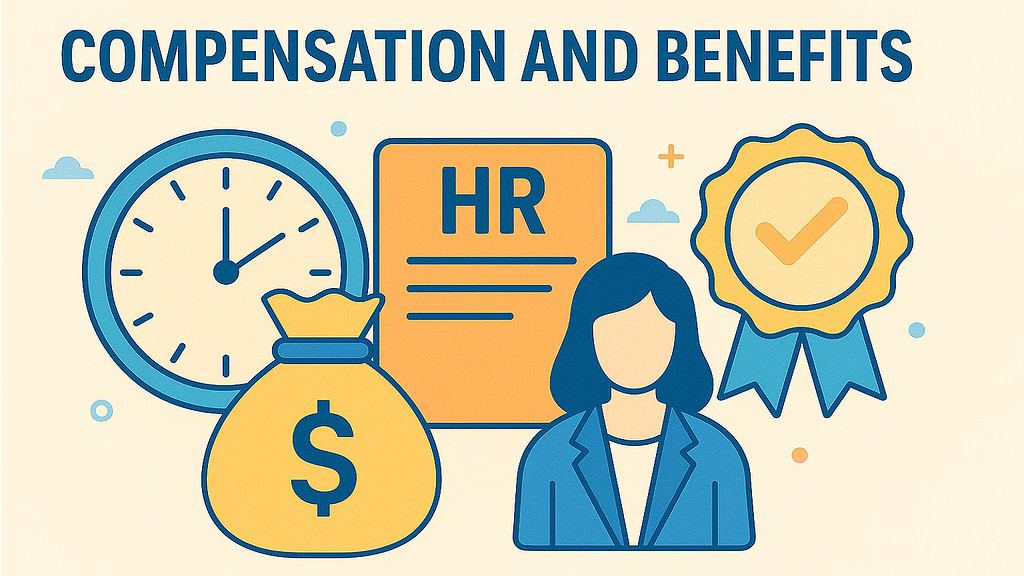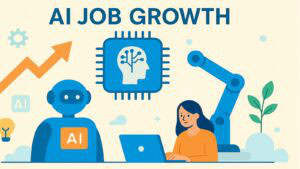Table of Contents
Introduction: How Compensation and Benefits Spark True Loyalty
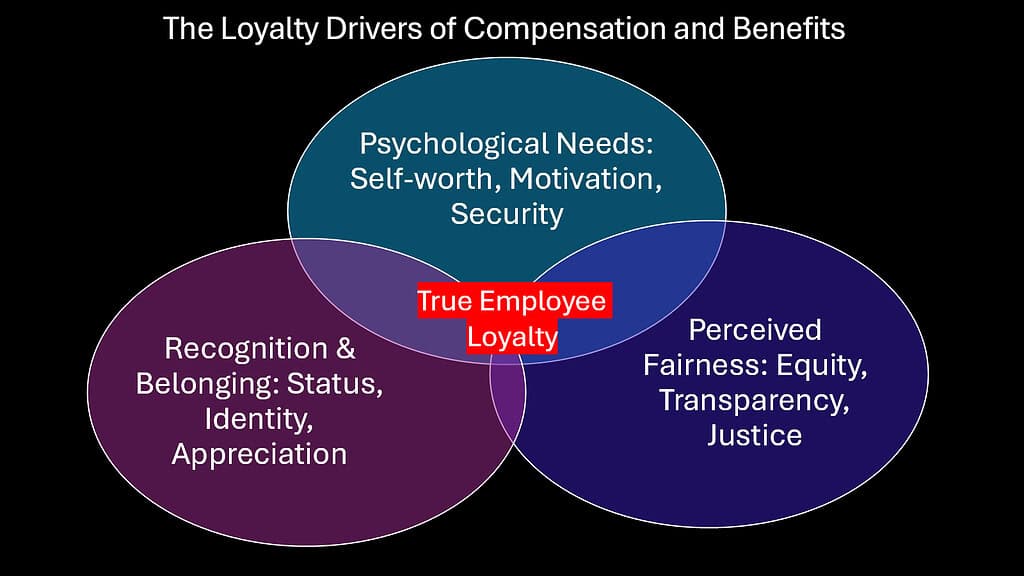
Compensation and Benefits represent far more than simple monetary transactions between employers and employees. These critical Human Resources functions serve as strategic pillars that shape organizational culture, drive employee engagement, and ultimately determine business success. When thoughtfully designed and implemented, Compensation and Benefits systems transcend traditional paycheck distributions to become powerful tools for building authentic workplace loyalty.
The psychology behind employee loyalty reveals fascinating complexities that extend beyond financial rewards. Research from Harvard Business School demonstrates how employees evaluate their total reward experience through multiple lenses including fairness perception, social recognition, and personal growth opportunities. Organizations that master this intricate balance discover that Compensation and Benefits can address fundamental human needs for security, achievement, and belonging.
Modern businesses face unprecedented challenges in attracting and retaining talent across diverse markets. The traditional approach of standardized salary structures and basic benefit packages no longer suffices in today’s competitive landscape. Companies must recognize that Compensation and Benefits function as strategic investments rather than operational expenses. These investments yield returns through enhanced productivity, reduced turnover costs, and strengthened employer brand reputation.
The six transformative approaches explored in this analysis reveal how progressive organizations leverage Compensation and Benefits to create sustainable competitive advantages. From equity-building frameworks to emotional contract development, each strategy demonstrates practical applications of behavioral economics and organizational psychology. These methods have proven effective across industries ranging from technology startups to established manufacturing enterprises.
Understanding the interconnected nature of Compensation and Benefits with other organizational functions provides crucial context for strategic implementation. The following exploration examines how reward systems influence recruitment effectiveness, training program participation, leadership development, and employee engagement initiatives.
Table 1: Compensation and Benefits Impact on Core HR Functions
| HR Function | Impact of Compensation and Benefits | Strategic Outcome |
|---|---|---|
| Recruitment | Attracts top talent through competitive packages | Enhanced candidate quality and acceptance rates |
| Training | Incentivizes skill building through learning bonuses | Improved employee capabilities and performance |
| Leadership Development | Rewards leadership behaviors and advancement | Stronger internal leadership pipeline |
| Employee Relations | Demonstrates organizational commitment to workforce | Reduced grievances and improved satisfaction |
| Employee Engagement | Creates emotional connection through meaningful rewards | Higher productivity and retention rates |
| Orientation | Establishes positive first impressions for new hires | Faster integration and cultural alignment |
| Organizational Development | Supports change initiatives through aligned incentives | Smoother transitions and adaptation |
| Change Management | Motivates acceptance of organizational transformations | Reduced resistance and faster implementation |
| Onboarding | Reinforces employment value proposition early | Accelerated time-to-productivity |
| Offboarding | Maintains positive relationships through fair treatment | Protected employer brand and potential rehires |
1. Compensation and Benefits as Equity Builders
Equity Theory provides compelling insights into how employees evaluate their workplace experiences relative to perceived fairness standards. This psychological framework, developed by John Stacey Adams, suggests that individuals continuously compare their input-to-outcome ratios with those of relevant others. When employees perceive inequitable treatment in Compensation and Benefits distribution, they experience psychological tension that often manifests as reduced loyalty and engagement.
Organizations that embrace transparency in their Compensation and Benefits structures create environments where equity perceptions flourish. Companies like Buffer and Salesforce have pioneered open salary policies that eliminate speculation and build trust through clear communication. These approaches demonstrate how perceived fairness directly correlates with employee commitment levels and organizational citizenship behaviors.
The implementation of equitable Compensation and Benefits systems requires careful consideration of multiple variables, including market positioning, internal consistency, and individual contribution recognition. Research from MIT Sloan School of Management indicates that organizations with transparent pay practices experience significantly lower turnover rates and higher employee satisfaction scores. This correlation suggests that equity building through Compensation and Benefits serves as a fundamental loyalty driver.
Successful equity building also addresses systemic biases that historically affected Compensation and Benefits distribution. Organizations conducting regular pay equity audits and implementing structured promotion criteria demonstrate a commitment to fairness that resonates with employees across all demographic groups. This comprehensive approach to equity creates psychological safety that encourages long-term organizational commitment.
The strategic application of Equity Theory extends beyond salary considerations to encompass comprehensive benefit offerings. Flexible work arrangements, professional development opportunities, and recognition programs contribute to overall equity perceptions when distributed fairly across the organization.
Table 2: Equity Theory Applications in Compensation and Benefits
| Equity Component | Traditional Approach | Equity-Building Approach | Loyalty Impact |
|---|---|---|---|
| Salary Determination | Secretive negotiation processes | Transparent pay bands and criteria | Increased trust and reduced turnover |
| Performance Rewards | Subjective manager discretion | Standardized metrics and processes | Enhanced fairness perception |
| Promotion Criteria | Informal advancement paths | Clear competency frameworks | Improved career satisfaction |
| Benefit Access | One-size-fits-all packages | Flexible options based on needs | Greater personal value recognition |
| Recognition Programs | Inconsistent acknowledgment | Systematic appreciation systems | Strengthened emotional connection |
2. Compensation and Benefits as Status Signals
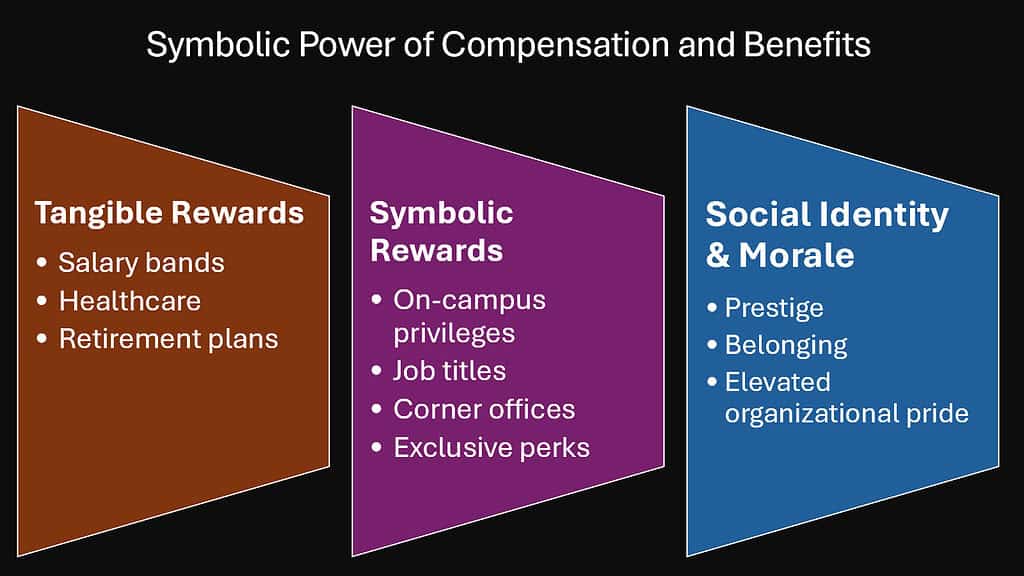
The symbolic power of Compensation and Benefits extends far beyond their functional value to serve as important status indicators within organizational hierarchies. Employees interpret reward systems as signals of their standing, recognition, and future prospects within the company. These perceptions significantly influence their emotional investment and loyalty toward the organization.
Status signaling through Compensation and Benefits operates on multiple levels including visible perks, exclusive access privileges, and recognition symbols. Companies like Google and Facebook have mastered the art of creating aspirational reward tiers that motivate employees to pursue advancement while reinforcing their current value to the organization. These symbolic elements often carry greater psychological weight than their monetary equivalents.
The effectiveness of status signaling depends on the meaningful differentiation between reward levels and the perceived attainability of advancement. Organizations that create clear progression pathways through their Compensation and Benefits structures provide employees with tangible goals that sustain motivation over time. This approach transforms reward systems from static offerings into dynamic motivational tools.
Cultural considerations play crucial roles in determining which status signals resonate most effectively with different employee populations. While some cultures emphasize individual recognition and exclusive privileges, others respond more positively to team-based rewards and collective achievements. Successful organizations tailor their status signaling strategies to align with their workforce demographics and organizational values.
The psychological impact of status signaling extends to external perception management as well. Employees often view their Compensation and Benefits packages as reflections of their professional worth in the broader market. Organizations that position their rewards competitively help employees maintain positive self-perception and professional pride.
Table 3: Status Signaling Elements in Compensation and Benefits
| Signal Type | Examples | Psychological Impact | Loyalty Outcome |
|---|---|---|---|
| Visible Perks | Executive parking, premium office space | Enhanced self-worth and peer recognition | Increased organizational pride |
| Exclusive Access | Leadership development programs, special events | Sense of belonging to elite group | Stronger commitment to advancement |
| Recognition Symbols | Achievement awards, public acknowledgment | Validated contribution and value | Emotional attachment to organization |
| Title Differentiation | Senior specialist, principal consultant levels | Professional identity reinforcement | Career investment in company growth |
| Flexible Privileges | Remote work options, flexible schedules | Autonomy and trust demonstration | Reciprocal loyalty and responsibility |
3. Compensation and Benefits Fueling Intrinsic Motivation
Self-Determination Theory provides valuable insights into how Compensation and Benefits can nurture intrinsic motivation that drives sustainable employee loyalty. This psychological framework recognizes three essential human needs: autonomy, competence, and relatedness. When reward systems address these core needs, they create internal motivation that surpasses external incentive effectiveness.
Autonomy in Compensation and Benefits manifests through flexible spending accounts, choice-based benefit selections, and performance-linked reward options. Organizations like Netflix have revolutionized traditional approaches by offering unlimited vacation policies and flexible work arrangements that empower employees to manage their own reward experiences. This autonomy creates psychological ownership that strengthens organizational commitment.
Competence development through Compensation and Benefits involves linking rewards to skill acquisition, professional growth, and performance improvement. Companies that invest in employee education, certification programs, and career advancement opportunities demonstrate long-term commitment to individual success. This investment creates reciprocal loyalty as employees recognize the organization’s role in their professional development.
Relatedness within reward systems emphasizes team-based incentives, peer recognition programs, and community building initiatives. Organizations that structure Compensation and Benefits to reinforce social connections and collaborative achievements tap into fundamental human desires for belonging and shared purpose. These connections foster emotional ties that go beyond mere transactional employment relationships.
The integration of intrinsic motivators within Compensation and Benefits requires careful balance between external rewards and internal satisfaction drivers. Research from University of Rochester demonstrates that employees who experience high levels of autonomy, competence, and relatedness in their reward experiences show significantly higher engagement levels and organizational commitment.
Table 4: Self-Determination Theory Applications in Reward Systems
| SDT Component | Compensation Application | Benefits Application | Motivation Outcome |
|---|---|---|---|
| Autonomy | Flexible reward choices, performance-based options | Customizable benefit packages, work-life balance | Self-directed commitment and responsibility |
| Competence | Skill-based pay progression, learning incentives | Professional development support, certification funding | Growth-oriented loyalty and achievement |
| Relatedness | Team-based bonuses, peer recognition | Family support benefits, community programs | Social connection and belonging |
| Integration | Holistic reward philosophy | Comprehensive well-being approach | Intrinsic motivation and engagement |
| Optimal Experience | Meaningful work alignment | Purpose-driven benefit design | Sustainable organizational commitment |
4. Compensation and Benefits as Cultural Anchors
Compensation and Benefits systems serve as powerful cultural anchors that communicate organizational values, priorities, and behavioral expectations to the workforce. These reward structures create tangible expressions of company culture that influence employee attitudes, behaviors, and long-term loyalty decisions. The alignment between stated values and actual reward practices determines the authenticity and effectiveness of cultural messaging.
Netflix exemplifies how Compensation and Benefits can reinforce a performance-driven culture through their philosophy of paying top-of-market salaries while maintaining high performance standards. This approach attracts individuals who thrive in challenging environments and creates a self-selecting workforce aligned with organizational values. The cultural consistency between rewards and expectations builds trust and loyalty among employees who embrace this philosophy.
Conversely, Walmart has developed Compensation and Benefits strategies that reflect their commitment to accessibility, community involvement, and opportunity creation. Their comprehensive benefits packages for part-time employees and extensive internal promotion opportunities demonstrate cultural values that prioritize inclusive growth and employee development. This approach resonates with workforce demographics and creates loyalty through aligned expectations.
Cultural anchoring through Compensation and Benefits also involves addressing evolving societal values and workforce expectations. Organizations that incorporate sustainability incentives, diversity bonuses, and social impact recognition demonstrate cultural adaptability that attracts and retains employees with similar values. This alignment creates emotional connections that strengthen loyalty beyond financial considerations.
The effectiveness of cultural anchoring depends on consistent implementation across all reward system components. Mixed messages between different Compensation and Benefits elements can create cultural confusion and reduce employee trust. Successful organizations ensure that their entire reward portfolio reinforces consistent cultural themes and behavioral expectations.
Table 5: Cultural Expression Through Compensation and Benefits
| Cultural Value | Compensation Expression | Benefits Expression | Employee Response |
|---|---|---|---|
| Innovation | Idea-generation bonuses, patent rewards | Learning sabbaticals, creativity time | Enhanced creative engagement |
| Collaboration | Team-based incentives, shared success metrics | Group travel rewards, team building | Strengthened cooperative behaviors |
| Customer Focus | Service quality bonuses, customer satisfaction ties | Customer interaction training, service excellence | Improved customer commitment |
| Sustainability | Environmental impact rewards, green initiatives | Eco-friendly benefits, carbon offset programs | Values-aligned loyalty |
| Diversity | Inclusion leadership bonuses, mentorship incentives | Cultural competency development, inclusive policies | Enhanced belonging and commitment |
5. Compensation and Benefits as Strategic Investments
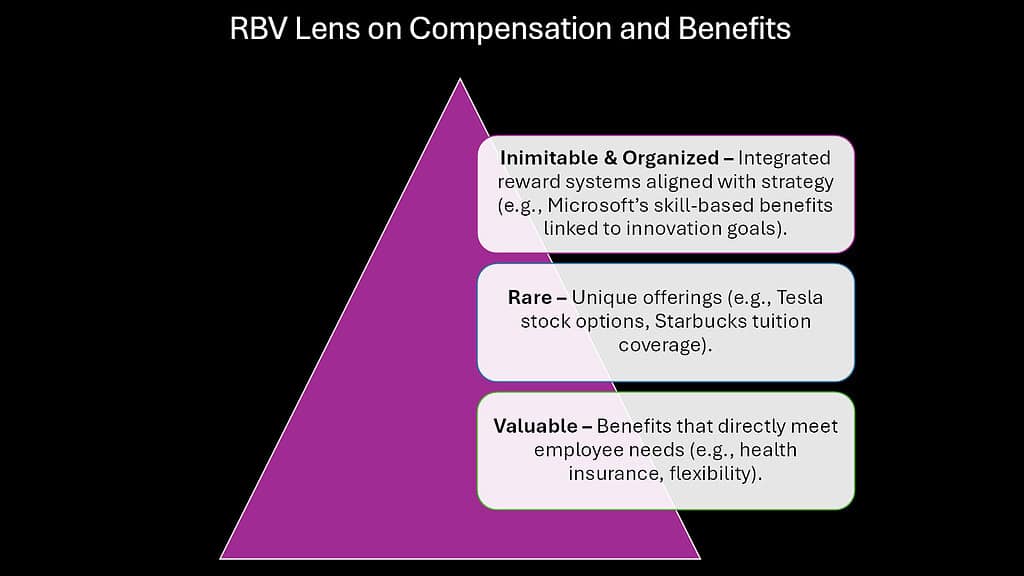
The Resource-Based View of strategic management provides a compelling framework for understanding how Compensation and Benefits function as strategic investments that create sustainable competitive advantages. This perspective emphasizes that organizational resources must be valuable, rare, inimitable, and non-substitutable to generate lasting competitive benefits. Well-designed reward systems meet these criteria by developing unique human capital advantages.
Strategic investment in Compensation and Benefits involves aligning reward systems with long-term organizational objectives rather than short-term cost management. Companies like Google and Microsoft invest heavily in comprehensive benefit packages that attract top talent, reduce turnover costs, and enhance innovation capabilities. These investments generate returns through improved productivity, faster product development, and stronger market positioning.
The Resource-Based View analysis reveals how customized Compensation and Benefits packages create barriers to competitor talent acquisition. Organizations that develop unique reward combinations tailored to their specific workforce needs make it difficult for competitors to replicate their human capital advantages. This strategic protection strengthens employee loyalty while building organizational capabilities.
International applications of strategic Compensation and Benefits investment demonstrate varying approaches across different economic contexts. Japanese companies traditionally emphasize long-term employment security and comprehensive family benefits, creating deep employee loyalty and organizational knowledge retention. European organizations often focus on work-life balance and social responsibility elements that align with regional cultural values and regulatory environments.
The measurement of strategic investment returns requires comprehensive analysis beyond traditional cost-benefit calculations. Organizations must evaluate talent retention rates, innovation outputs, customer satisfaction improvements, and market share growth to understand the full impact of their Compensation and Benefits investments. This holistic assessment reveals the true strategic value of reward system investments.
Table 6: Resource-Based View Applications in Reward Strategy
| RBV Criteria | Compensation Application | Benefits Application | Competitive Advantage |
|---|---|---|---|
| Valuable | Market-leading salaries for critical roles | Unique wellness and development programs | Enhanced talent attraction and retention |
| Rare | Specialized skill premiums, innovation bonuses | Cutting-edge technology benefits, exclusive perks | Differentiated employer value proposition |
| Inimitable | Company-specific performance metrics | Tailored benefit combinations | Protected talent pipeline |
| Non-substitutable | Integrated reward philosophy | Comprehensive well-being ecosystem | Sustainable competitive positioning |
| Strategic Alignment | Goal-linked incentive structures | Mission-driven benefit design | Enhanced organizational capability |
6. Compensation and Benefits as Emotional Contracts
The concept of emotional contracts extends beyond traditional employment agreements to encompass the psychological bonds created through thoughtful Compensation and Benefits design. These emotional connections develop when employees perceive that their organization genuinely cares about their well-being, success, and personal fulfillment. Such perceptions create loyalty that withstands competitive pressures and economic challenges.
Emotional contract development through Compensation and Benefits involves personalizing reward experiences to address individual needs, preferences, and life circumstances. Organizations that implement flexible benefit options, life event support, and personalized recognition programs demonstrate understanding of their employees as whole individuals rather than merely functional resources. This personal attention creates emotional attachment that transcends transactional relationships.
The psychological impact of emotional contracts manifests through increased discretionary effort, voluntary commitment, and advocacy behaviors. Employees who feel emotionally connected to their organizations often exceed performance expectations, recommend the company to others, and remain loyal during difficult periods. These behaviors create significant value that justifies investment in emotional contract development.
Trust serves as the foundation for effective emotional contracts within Compensation and Benefits systems. Organizations must consistently deliver on reward promises, communicate transparently about changes, and demonstrate fairness in distribution processes. Broken trust in reward systems can destroy emotional contracts and create lasting damage to employee relationships.
The cultivation of emotional contracts requires ongoing attention and adaptation to changing employee needs and expectations. Life stage transitions, career development phases, and external circumstances influence individual emotional contract requirements. Organizations that maintain responsiveness to these changes sustain stronger emotional connections and higher loyalty levels.
Table 7: Emotional Contract Elements in Reward Systems
| Contract Element | Compensation Expression | Benefits Expression | Emotional Outcome |
|---|---|---|---|
| Personal Recognition | Individual achievement bonuses, milestone celebrations | Personalized benefit selections, life event support | Enhanced sense of value and appreciation |
| Future Security | Career progression incentives, retention bonuses | Comprehensive insurance, retirement planning | Reduced anxiety and increased trust |
| Work-Life Integration | Flexible earning options, location premiums | Family support benefits, wellness programs | Improved life satisfaction and loyalty |
| Growth Investment | Development-linked compensation, education funding | Learning benefits, mentorship programs | Strengthened personal connection |
| Fairness Assurance | Transparent pay processes, equity adjustments | Equal access benefits, inclusive policies | Trust and psychological safety |
Conclusion: Rethinking Loyalty Through Compensation and Benefits
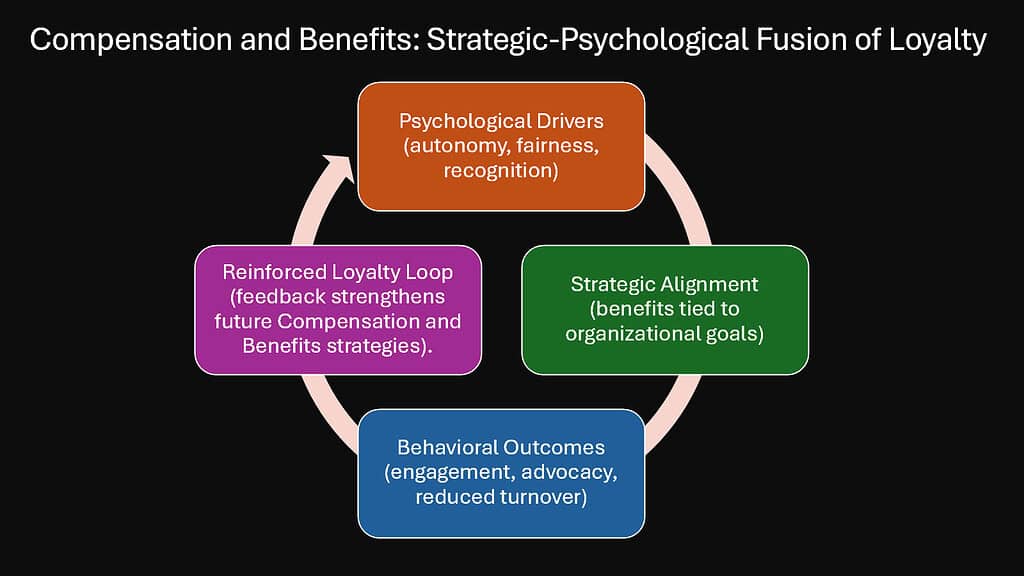
The evolution of employee loyalty in modern organizations requires fundamental shifts in how leaders conceptualize and implement Compensation and Benefits strategies. Traditional approaches that treated rewards as operational expenses and standardized offerings have given way to sophisticated systems that recognize the psychological, social, and strategic dimensions of employee commitment. This change signifies a more profound comprehension of human motivation and the effectiveness of organizations.
The convergence of psychological insights and strategic thinking in Compensation and Benefits design creates opportunities for building authentic loyalty that benefits both employees and organizations. When reward systems address equity concerns, provide meaningful status recognition, fuel intrinsic motivation, anchor cultural values, generate strategic advantages, and nurture emotional connections, they create comprehensive loyalty ecosystems that sustain competitive advantage.
Implementation of loyalty-inspiring Compensation and Benefits requires careful orchestration of multiple elements working in harmony toward common objectives. Organizations must balance financial constraints with strategic investments, individual needs with collective goals, and short-term pressures with long-term sustainability. This complexity demands sophisticated leadership and ongoing commitment to employee-centered approaches.
The measurement and evaluation of loyalty outcomes extends beyond traditional metrics to encompass behavioral indicators, emotional engagement levels, and strategic contribution assessments. Organizations that develop comprehensive loyalty measurement systems can optimize their Compensation and Benefits investments for maximum impact while demonstrating clear returns on their strategic commitments.
Future developments in Compensation and Benefits will likely incorporate advancing technologies, changing workforce demographics, and evolving societal expectations. Organizations that maintain adaptability while preserving core loyalty-building principles will continue creating competitive advantages through their human capital investments.
Table 8: Compensation and Benefits Impact on Business Functions
| Business Function | Compensation Impact | Benefits Impact | Strategic Outcome |
|---|---|---|---|
| Marketing | Attracts brand ambassadors through competitive rewards | Enhances employer brand through comprehensive offerings | Improved recruitment and reputation |
| Sales | Motivates performance through incentive alignment | Supports customer relationship building through stability | Enhanced revenue generation |
| Operations | Reduces turnover costs and training expenses | Improves productivity through wellness and engagement | Operational efficiency gains |
| Finance | Creates predictable talent investment returns | Generates tax advantages and risk management | Financial performance optimization |
| Corporate Strategy | Enables talent-based competitive positioning | Supports strategic flexibility through workforce stability | Sustainable competitive advantage |
| Information Technology | Attracts specialized technical talent | Supports innovation through learning and development | Enhanced technological capabilities |
The strategic imperative for organizations lies in recognizing Compensation and Benefits as fundamental business investments rather than necessary costs. Companies that embrace this perspective and implement loyalty-inspiring reward systems position themselves for sustained success in increasingly competitive talent markets. The question facing organizational leaders is not whether to invest in comprehensive Compensation and Benefits strategies, but how quickly they can transform their current approaches to capture the full potential of human capital loyalty.

